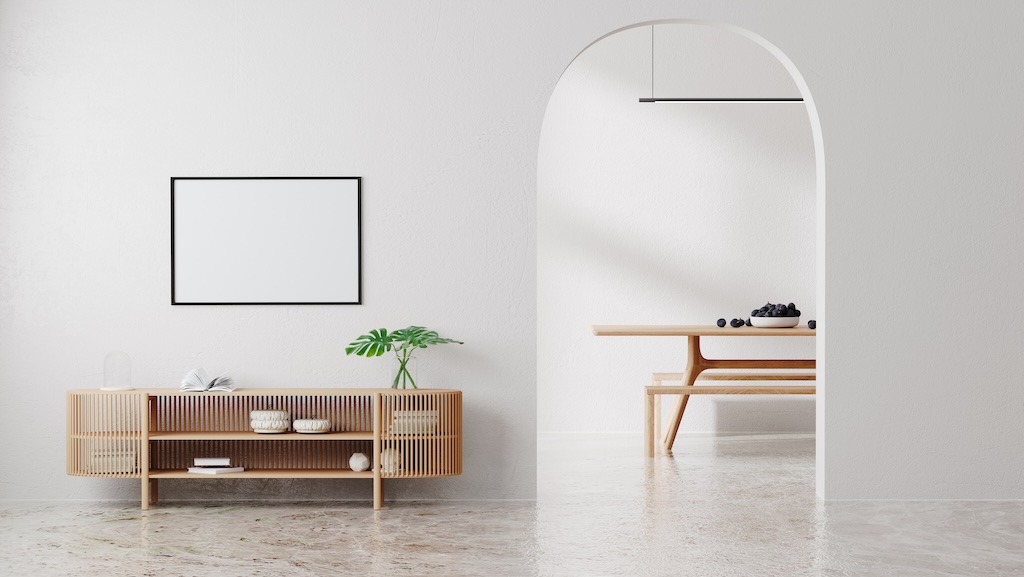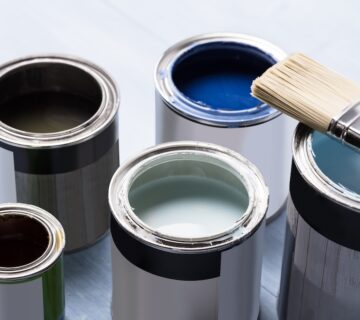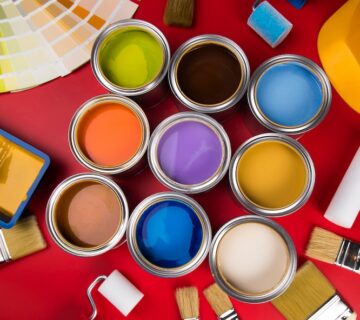Painting interior walls is a common DIY project, but achieving a professional finish requires more than just slapping on a coat of paint. It’s an art that involves proper preparation, choosing the right tools, and employing specific techniques. In this blog, we’ll explore how you can paint your interior walls like a pro, resulting in a flawless and enduring finish. To help you along, we’ll guide you through each step, from surface preparation to the final touches.
Preparing the Surface
The key to a professional-looking paint job is in the preparation. Start by removing furniture from the room or moving it to the center and covering it with drop cloths. Protect your floors with canvas drop cloths, which are less slippery than plastic ones. Also, remember to tape off skirting boards, window frames, and doorframes with painter’s tape to ensure clean lines.
Next, clean your walls thoroughly. Dust, dirt, and grease spots can prevent paint from adhering correctly. Use a mild detergent and rinse with water for best results. Fill in any holes or cracks with spackle, and once it’s dry, sand it smooth. Ensure the entire wall is dust-free before proceeding to the next step.
Choosing the Right Paint and Tools
Choose high-quality paint. While it may be tempting to save money on cheaper options, premium paints provide better coverage, richer colors, and longer-lasting results. They also tend to be more durable and washable. Additionally, consider the paint’s finish, as glossier finishes tend to highlight imperfections while matte finishes can hide them.
For tools, invest in a good-quality brush, roller, and paint tray. Brushes with synthetic bristles work well with water-based paint, while natural bristles are suited for oil-based paints. Rollers with a medium nap are great for most walls, offering smooth coverage. High-quality tools can make the difference between an amateur and a professional-looking finish.
Painting Techniques for a Professional Finish
Cutting In
Begin with ‘cutting in,’ a technique where you paint the corners, ceiling edges, baseboards, and around door and window frames with a brush. This process requires a steady hand. Dip only a third of the bristles into the paint, tapping off the excess. Hold the brush like a pencil and paint with smooth strokes. Take your time with this step, as it will greatly influence the overall quality of your paint job.
Using a Roller
Once the edges are done, it’s time to use a roller for the main wall areas. Start by loading the roller evenly with paint. Begin from a corner and roll in a W or M pattern, then fill in the gaps with parallel strokes. This technique helps to avoid roller marks and ensures even coverage. Avoid overloading the roller with paint to prevent drips. Apply enough pressure to get smooth coverage, but not so much that it leaves roller marks. Reload the roller as needed to maintain a consistent finish.
Applying Multiple Coats
For the best finish, apply at least two coats of paint. Wait for the first coat to dry completely before applying the second. This provides depth to the color and ensures an even, smooth finish. Checking the manufacturer’s recommended drying times can help you plan your work schedule.
Post-Painting Cleanup and Care
Cleaning Your Tools
Clean your brushes and rollers immediately after use. For water-based paint, use soap and water. For oil-based paints, you’ll need a solvent like mineral spirits. Proper cleaning will extend the life of your tools and ensure they’re ready for your next project.
Curing Time
Allow the paint to cure for several days for the best durability. Avoid touching or washing the walls during this time. The curing process is when the paint fully hardens and achieves its final color and sheen, so patience is important. This waiting period can be crucial for areas that will see a lot of wear and tear.
Final Thoughts
Achieving a professional finish when painting interior walls is within reach if you prepare properly, choose the right materials, and use the correct techniques. Remember, the effort you put in preparation and painting will be evident in the quality of the finish. For more painting tips and techniques, visit our website at sisupainting.com and check out our blog at sisupainting.com/blog.





No comment